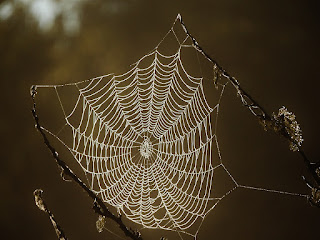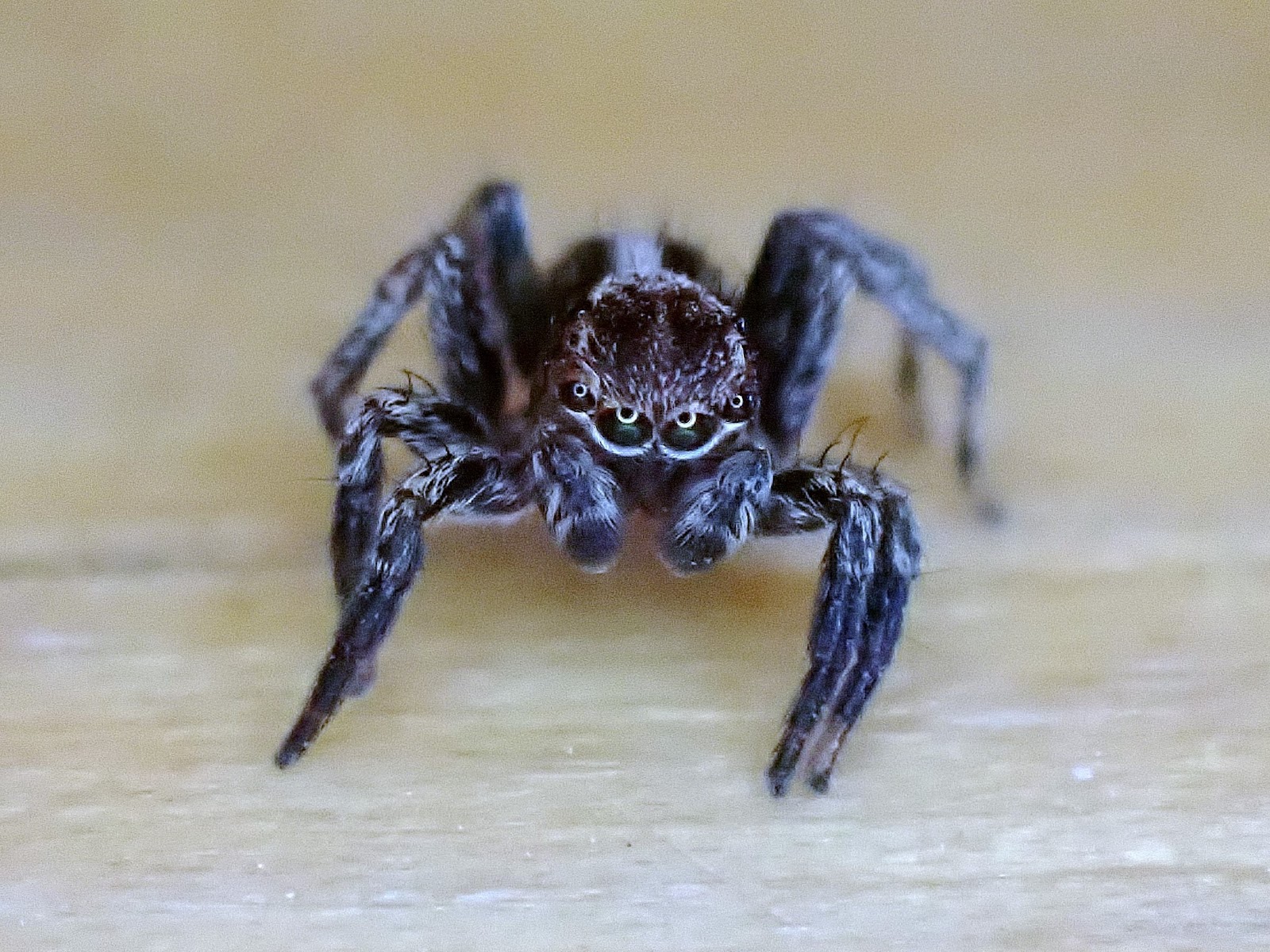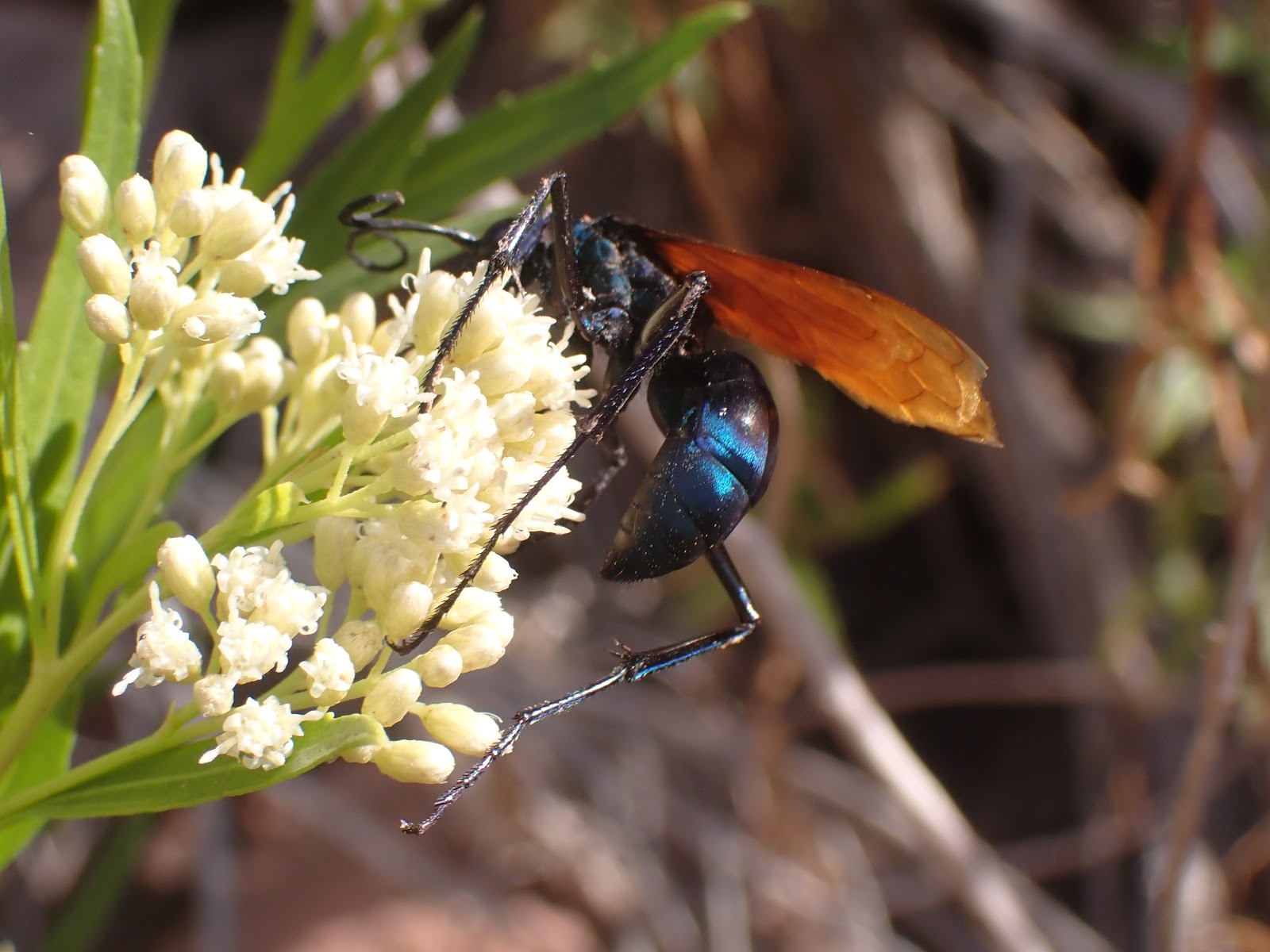A small group of first graders nearly vibrated with excitement as they gathered in a circle on the carpet at the front of their room. They remembered me from last school year, when I’d brought tubs full of nature stuff to their kindergarten classroom. For those first Museum Mobile visits, we focused on exploring nature using our five senses. We smelled a sprig of white cedar, listened to acorns rattle in a cup, felt the smooth bone of a deer antler, and looked at the orange teeth on a beaver skull. We left taste for snack time.
Now, as first graders, I explained, we get to practice those skills again…by using our eyes to make observations about spiders! I was heartened by the wave of enthusiasm – not fear – that rippled through the group. No matter what grade Mr. Brinker is teaching at the Drummond Elementary School, I can count on his students to be curious and enthusiastic.
Holding up one of the several spider specimens encased in a little puck of acrylic, I assured the first graders that they were “real but dead.” We also discussed how the spider couldn’t hurt the student, nor could the student hurt the spider in this clever display. These are some of my favorite specimens at the Museum. Lois Nestel, our founding naturalist, did a wonderful job of preserving the fragile beings in a very accessible way. Now, a few decades later, they are still allowing kids to get a closer look!
I handed one spider to each kid, and then started a rhythm of looking, then passing the specimens around the circle. “This one’s shiny!” “Look at how long the legs are!” This one is so tiny!” Their exclamations showed that they were thinking critically. Once all the specimens were back in the tub, I asked for students to share their observations formally, after raising their hands. “Some were really small!” “Some were really big!” “They all had eight legs!” “They all had two body sections,” were the replies.
“Ok,” I summarized, “so we noticed that even though there were different shapes, sizes, and colors of spiders, they all had a few things in common. Now we’ll dress up one of your friends to look like a spider!”
I chose Levi, a particularly enthusiastic student sitting next to me to be the volunteer. First, we put a black tunic over his head. “This is the spider’s cephalothorax,” I explained. “It’s a combination of a head and thorax.” “I’ve never heard that, say that again?” asked Mr. Brinker, peeking out from around his computer screen. One of the reasons I love teaching in his classroom is that Mr. Brinker loves learning new facts and vocabulary just as much (or even more!) than the students. He sets a great example!
Then I tied a piece of black fabric around Levi’s waist to be the spider’s abdomen. Two points at the bottom represented spinnerets for sending out silk. “Spiders have just two body sections,” I reviewed. “Insects have three body parts!” blurted another student, so excited to share knowledge that they answered my next question before I’d even asked.
Then I started adding legs to the costume. The kids laughed when I pulled each gangly, homemade limb out of the bag. Another Museum Mobile educator had made the legs from black pantyhose and foam cylinders. They were jointed and floppy, and when I started attaching them to a strip of Velcro hidden under Levi’s arms, the class erupted in laughter. Through their merriment we were able to count six legs as I attached them, three on each side. “Where are the last two legs?” I asked. And Levi kicked out his toes to show that his own legs were counted in the total of eight.
More giggles erupted when I pulled out the googly eyes and started attaching them to Velcro at the top of the cephalothorax tunic. “All the spiders in Wisconsin have eight eyes, but a few around the world have just six, or four or two or none,” I explained. And then I attached two pointy fangs (made out of black foam) to the top of Levi’s shoulders. I waited until that round of giggles died down to explain that the science word for these is chelicerae. Mr. Brinker perked up again at this fun new word. As I dismantled the spider costume, we reviewed all those things that spiders have in common.
With the time we had left, we talked about how spiders are different, too. First, I laid out photos of different habitats – a pond, a leaf, a flower, and two kinds of webs. Then we matched a spider species to each one – a fishing spider, a jumping spider, a crab spider, an orb-weaver, and a funnel-web spider.
 |
Spiders are amazing. Orb-weaver spiders spin these wonderful webs. Photo by Emily Stone. |
I visited Mrs. Ramsey’s first grade class, too, and presented essentially the same lesson. In her class, though, there was one little girl who confided that both she and her mom were scared of spiders. She bravely pushed through, though, and by the end of class she was asking “Where can I learn more about spiders?” Mrs. Ramsey was ready, telling the kids they’d have a unit on spiders in science class soon.
 |
| Crab spiders don’t build elaborate webs, instead, they match the color of a white or yellow flower and then wait in ambush for an insect to land. Photo by Emily Stone. |
By the end of those two lessons, I was giddy with the kids’ contagious enthusiasm, impressed by the teachers’ ability to inspire and direct curious minds, and optimistic about this community where the children love nothing more than to learn about nature. I can’t wait to visit them again in Winter and Spring!
Emily’s award-winning second book, Natural Connections: Dreaming of an Elfin Skimmer, is available to purchase at www.cablemuseum.org/books and at your local independent bookstore, too.
For more than 50 years, the Cable Natural History Museum has served to connect you to the Northwoods. The Museum is open with our brand-new exhibit: “Anaamaagon: Under the Snow.” Our Fall Calendar is open for registration! Follow us on Facebook, Instagram, YouTube, and cablemuseum.org to see what we are up to.

.JPG)






